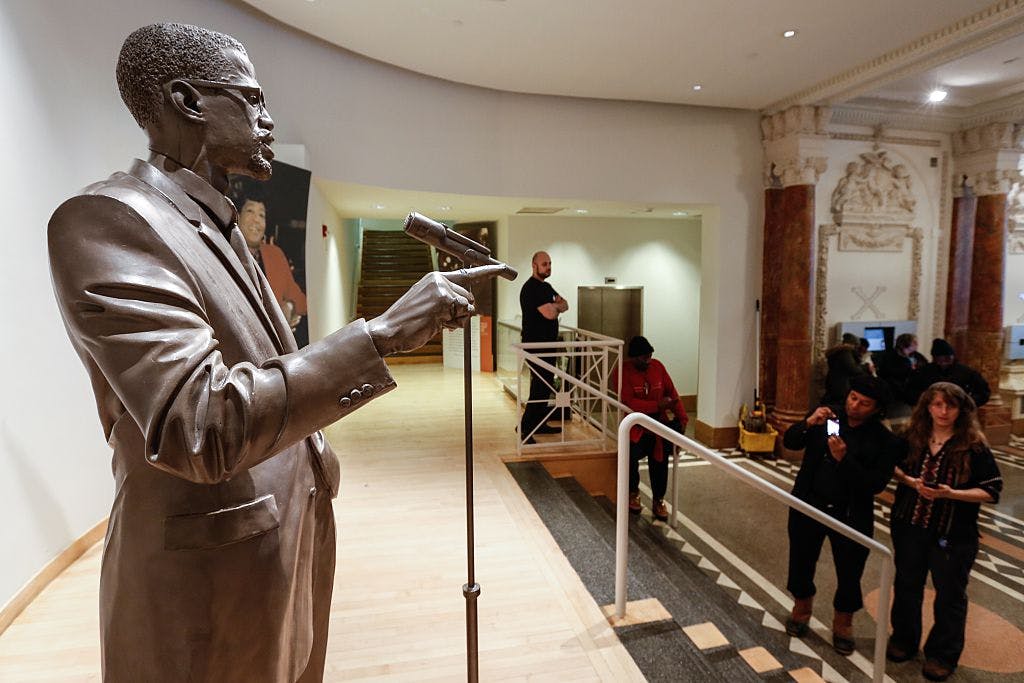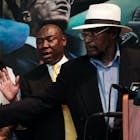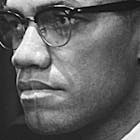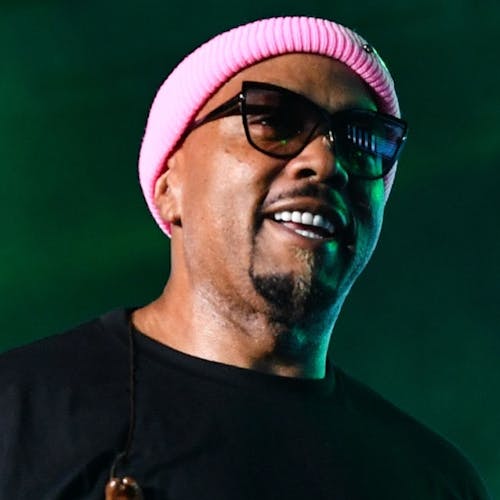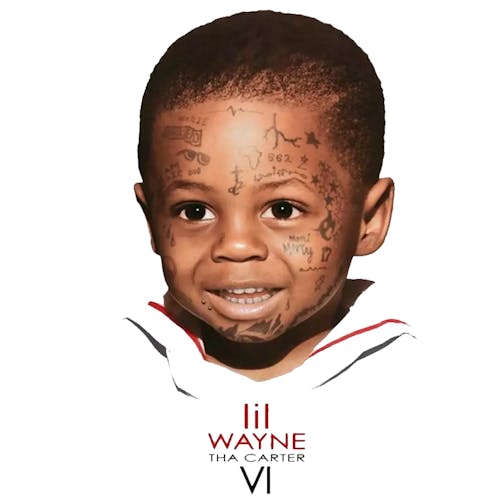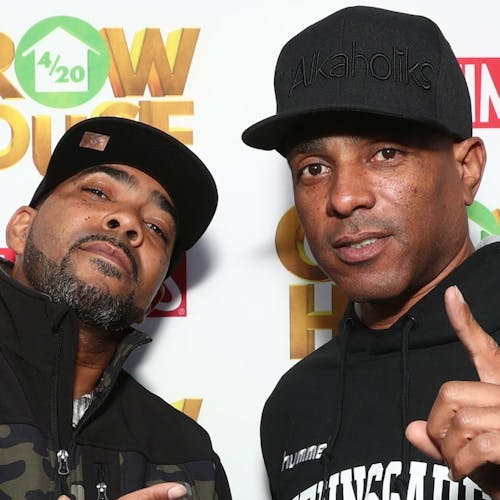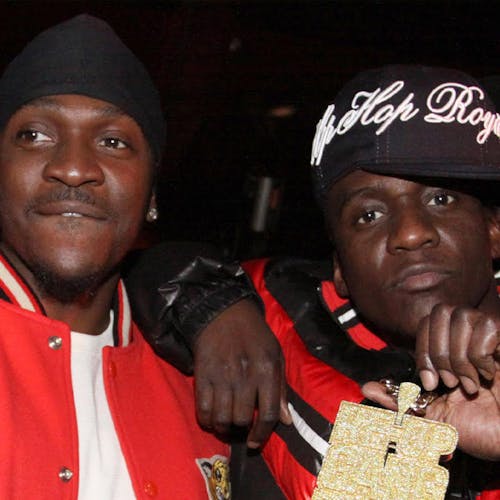

Malcolm X, Hip-Hop and The Audubon Ballroom: An Oral History
Malcolm X, Hip-Hop and The Audubon Ballroom: An Oral History
By Jay Quan
Published Mon, November 18, 2024 at 1:00 PM EST
The Audubon
The Audubon Theatre and Ballroom, most commonly referred to as The Audubon Ballroom, was a theater located at 3940 Broadway at West 165th Street in Washington Heights, just above Harlem. Built in 1912 by producer William Fox of Fox Film Corporation fame, the Audubon, as it is affectionately referred to, has been called the William Fox Audubon Theatre, The Beverly Hills Theatre, and The San Juan Theatre. The Audubon held about 3,000 people, and over the decades it has been used for religious services, union meetings, and the annual New York Mardi Gras Festival, which was held there in the 1950s.


When religious and civil rights leader Malcolm X, formerly a member of the Nation of Islam, separated from that organization, he founded his own group, the Organization of African American Unity (OAAU). This group held its weekly meetings at the Audubon. On February 21, 1965, Malcolm was assassinated at the Audubon as he was beginning a speech. In the wake of the shooting, the building was forced to shut down, and the owners were unable to pay their personal property taxes.
The building was acquired by the state of New York in the late 1960s and continued to operate, showing films and hosting events. The San Juan Theater, as it was called at the time, became an important landmark for the Latino community, showcasing many popular Latin American films. The Audubon officially closed its doors to the public in 1980.


DROP YOUR EMAIL
TO STAY IN THE KNOW
Among the events hosted at the Audubon were many Hip-Hop parties thrown in the late 1970s before Rap made its way to records. The Treacherous Three, DJ AJ, Johnny Wa & Rayvon, Grand Wizzard Theodore & The Fantastic 5, Busy Bee, DJ Hollywood, and Afrika Bambaataa & The Soul Sonic Force were among the many to play the Audubon.
However, it was Grandmaster Flash & The Furious 5 who sold out the historic venue and played there several times. As teenagers in the late 1970s, many performers and party-goers were not well-versed in the history of Malcolm X and the tragedy that occurred at the Audubon a little more than a decade before. As well-known as Malcolm X is in popular culture today, he was still taboo in the 1970s, even among African Americans.
The Players
Some of the key players at the Audubon were: Grandmaster Flash, Grandmaster Melle Mel, Scorpio, Rahiem, Disco Bee, Dynamite & Cooleone, MC G.L.O.B.E. of The Soul Sonic Force, Sha Rock of The Funky 4, Lil Terri (inventor of "everybody say hoo"), Mr. Hyde of Dr. Jeckyll & Mr. Hyde, The Harlem World Crew, Keith LeBlanc (drummer with Sugar Hill Records), and Kool Moe Dee.
Grandmaster Flash & The Furious 5
Grandmaster Flash:
The Audubon was the pinnacle of our career. Before the Audubon, we did all the parties, venues, and schools, and my manager at that time, Ray Chandler, rest in peace, said that he wanted to take us to this building. This building was the biggest street party that we'd ever done. I remember going in and looking at the fire sign, and it said that the maximum amount that it could hold was 3,500 people. He told me that we could play there if I gave him three months to promote it."
Grandmaster Melle Mel:
When we played the Audubon, that was the first time that a Hip-Hop act played there. The Audubon seated one thousand people comfortably; that was with chairs and everything. We played the Audubon three or four times, and we packed it. With people going in and out, there were probably three thousand people there.

I remember the night Grandmaster Flash premiered the backspin at The Audubon. That was when I knew that I was gonna take this seriously, and do it for the rest of my life.
- Kool Moe Dee to The Foundation, 2003
Scorpio:
The Audubon wasn't a popular spot before we played there. In fact, they were about to tear it down. There was no action, and nothing was really happening, but when we started playing there, it brought more revenue and then other people started renting it out. By us playing there, it actually preserved the life of that spot for years. We were the first group to actually pack it and sell it out, and this is before Rap records, so we sold it out with no record. We were just those dudes, ghetto celebs, that could pull a crowd from Manhattan, The Bronx, and Queens. Spanish, Jamaicans, and musicians from other genres of music started to play the Audubon after we sold it out.
Rahiem:
The Audubon was popular for a short period from 1978-1980 for early Hip-Hop events. After Grandmaster Flash & The Furious 5 sold out the Audubon, the Hip-Hop scene began transcending the hood, and we started getting booked for multiple performances on the same day. I recall, prior to us recording any records, there was a point where we were doing 3 shows a night!
Sha Rock:
Grandmaster Flash & The Furious 4 were the first act to pack and sell out the Audubon on their own with no one else on the bill, but the Funky 4 sold it out on December 8, 1978 with The L Brothers, Dynamite & Cooleone, DJ A.J., Starski, Pete DJ Jones and B. Fats. There were no tickets, so the only way to know that an event was sold out was if the place was packed shoulder to shoulder, wall to wall. There was an ok crowd at the Grandmaster Flash & The 3 MC's show on April 22nd of '78, which was their first time playing there but in wasn't sold out. When they headlined on September 2nd of that same year there was only DJ AJ and his crew and they sold that one out. I was sick so I missed that show. They packed it again on December 23rd. They definitely opened the door for other Hip-Hop acts to play the Audubon.
Dynamite:
"Hip-Hop had outgrown school gyms, The Dixie Club, The P.A.L., and the various social clubs that allowed it access early on. It wasn’t the most desirable crowd, so promoters had to find private venues for rent. The Audubon was, at that time, the largest ballroom out of the many: The Savoy Manor, The Boston Road Ballroom, The Parkside Plaza, The Stardust Ballroom. Ballrooms were where people held their private functions during that period. The ballroom space that usually housed bands and wedding receptions started making more money by supplementing the bands that played these functions with DJs. This led to those early Hip-Hop promoters renting ballrooms because they held more people than clubs. The Audubon was just centrally located between Harlem and The Bronx, and it was the largest of the ballrooms.
The Audubon was a huge spot with a main room and smaller rooms around the main one. Black Door Productions was already doing parties at the smaller Renaissance Ballroom in Harlem and filling that up. It was always a double-up when Ray Chandler and Flash brought the show to Harlem because now you had all of The Bronx plus the Harlem crowd, so those parties were always packed
Lil Terri:
The Audubon was my favorite place. There were lots of stick-ups there, but it was my favorite! Ray Chandler, the manager for Grandmaster Flash & The Furious 5, told me and my sister that he needed to meet with us. We met with him at The Audubon, and he had stacks of flyers. He told us that Flash and the Furious were getting big, and he needed us to give out those flyers wherever we could. We were promoting Flash's parties big time! I was giving out the flyers everywhere. I'd go to school, give out flyers, and leave; didn't even go to class. We put flyers in stores, in schools like Dewitt Clinton, Evander Childs, Walton High, Morris High. We put them in the projects like Forest, McKinley, Patterson, Gun Hill, and everywhere! The Audubon Ballroom is why I have corns and bunions on my feet. My book will explain why!
Disco Bee:
Once we packed the Audubon, we packed every place we played. Every school, everywhere we played. We really didn't need to make records, because we were making enough money just doing what we were doing. We got the offer to do "Superappin'", and we started practicing on Cypress Avenue at Flash's house. The Audubon took everything to another level. We were already packing The Dixie Club, Black Door, and those places, but we needed something bigger, and we weren't sure that we could pack The Audubon.
Sha Rock:
The Audubon was only active from 1978-1980 for Hip-Hop acts. We didn't even call it Hip-Hop yet, all of the flyers said "Disco History At The Audubon". Not just anybody could play the Audubon Ballroom, you had to be an established group. We actually battled other groups at least twice at the Audubon in the beginning of 1979 before Rap records, and one of the groups was Flash & The Furious 4. I don't remember anyone else really because they were the only group that we considered competition.
Cooleone:
The Audubon wasn’t a particularly popular spot, but it was a change from the hole in the walls that Hip-Hop emerged from. For an up and coming music genre that had very few resources, the Audubon was one of the few larger places that would allow us access. Also because of its reputation as the place Malcolm X was murdered many in Harlem shunned the place.



One reason that the Audubon wasn't as popular as other ballrooms is because it wasn't as easy to get to. It's not even in Harlem — it's in Washington Heights!
- Alonzo Brown aka Dr. Jeckyll to Rock The Bells, 2023
Kool Moe Dee:
I remember when it was just the three MCs, and then Flash put Mr. Ness (later Scorpio) down with the group. I also remember the night Flash premiered the backspin. That was when I knew that I was going to take this seriously and do it for the rest of my life. Until that time, I wrote rhymes, but it was more like Hollywood and Starski's style with the crowd participation and call and response. I wasn't really taking it seriously. They would bring music and set up in the park and I would get on and do a little something. But that night at the Audubon, I went to see Starski, but they would double bill it. They had Flash from 10 - 12 and Starski from 12 - 2, then Flash from 2- 4 and Starski from 4 - 6. At that time, Starski was the headliner at the Audubon, and the hottest thing as far as the club was concerned. He and Hollywood were number one and two at the time. Until Flash came to Manhattan, and this is some more friction between Manhattan and the Bronx, it wasn't that Flash wasn't valid, but when he came it opened him up to the domination of the whole situation because we were still looking at Starski and Hollywood as the top dogs. We heard about Flash and Herc but as far as New York went, we didn't see them, we didn't know what they were doing, and nobody is rockin' parties like Luvbug - so he is the top dog."
Grandmaster Melle Mel:
Grandmaster Flash premiered the backspin at the Audubon. When he did a version of it previously, he did it with one hand, he'd let the record play, spin it back, and then let it play again. I suggested that he should just try it with two hands - spin with that hand, but when you pull it over spin with the other hand and then go back to it. We were doing our routine to "Hot Shot" by Karen Young, and Flash kept repeating the breakdown part and I'd never seen him do that until right then. The crowd was amazed, and right then the whole scene and the music took a whole different dynamic, because before that Flash was cuttin' on beat. Kool Herc would play the records and they'd be jumbled up, and then the next record would come in. Flash actually had clean cuts, and he mastered that, but once he did that back spin [it introduced] extended breaks. You could rap through the breaks and it was a whole other dynamic as far as being entertaining. It was some real mixology, and that's what always stuck out. That first record that he did it with was "Hot Shot".
Scorpio:
Once we sold out The Audubon, people started coming to us with offers. Even long before "Rapper Delight" and Rap records were a reality, [producers and label owners] were coming to us and asking us to make records, but we didn't have the vision. This is where the late great Mrs. Rob [Sylvia Robinson, Sugar Hill Records founder] was so special. We were just so used to doin' parties for three or four hours at a time, that we couldn't picture us condensing what we do down to five minutes for a record. It was so much that Grandmaster Flash & The Furious 5 brought collectively, we didn't know how that would work on records with Flash being the master of cuttin', and us rhymin' individually, and doing switchovers, and the beat box, we didn't have that vision. The Audubon opened those doors, but we didn't have the vision to take advantage of that situation. It actually took Mrs. Robinson releasing "Rappers Delight" for us to see how we could do it, and once we saw what it took, we could do it with our eyes closed. The Audubon proved that you had to put respect on the Grandmaster Flash & The Furious 5 name because we were selling out ballrooms now. People were coming from Staten Island and all over. We were those dudes. And I don't say that to be arrogant or make others feel bad, but facts is facts.
Disco Bee:
I played The Audubon with the group [Grandmaster Flash & The 3 MCs and later Grandmaster Flash & The Furious 4], two or three times. The first time we played, there we weren't sure that we could pack the place, but there was a line outside of people trying to get in. Once we got with Ray Chandler, we started playing schools, The Audubon and everywhere. Before Ray we were playing small clubs, no schools or ballrooms, and it was just me and Flash at one point before Ray Chandler.
Sha Rock:
You have to remember that the crucial year of the MC was 1978. Although Herc did his party in '73 and Coke La Rock and other MC's existed, it took from '73 until '78 for MC's to start saying full rhymes on the beat and rhyme styles to evolve. The Audubon was right there for the rise of MC, and if you didn't make it between '78 and '80 you missed it.
Kool Moe Dee:
The Audubon was the first time you had the fusion of Manhattan comin' to see Luvbug, and the Bronx comin to see Flash. I'll never forget Starski was about to get off and Creole was telling him to turn his music off, like arrogantly. He was like, "It's time for Grandmaster." I was annoyed, like who is this kid tellin' Starski to get off? He's got a lot of nerve! Finally, Starski said arrogantly, "We gonna take a break now, but we will be right back," basically like we're just killin' time 'cuz they're on the bill, makin' a lil slap at them. I was in the front row, and they turned the lights out. Creole starts this long intro over this echo chamber, and it was the first time I'd ever heard that. I call Creole the original hype man Flavor Flav is the grandson of Creole. I do the blood line on Hip-Hop. But he did this greatest show on Earth type of intro, like, "Aaarrree yyoouu rreeaaddyy?" and Flash dropped the bells, "Take Me To Mardis Gras" by Bob James.
In Manhattan, we listened to Michael Jackson and whatever club record was out, and the DJ would rhyme over that. We didn't get into a lot of breaks besides "Jam On The Groove", stuff like that. Starski had just finished doing a routine over a Michael Jackson beat, and when Flash threw on the bells the Bronx crowd knew what was up; they went crazy, and the Manhattan crowd couldn't deny that something was happening that was different. I was shocked because not only did they intro Flash and he came in on beat, the spotlight hits Cowboy who was sitting in a chair and he just started spelling his name out. It was the hottest shit that I'd heard at that point. "The C-O-W-B-O-Y the man is bad, that you can't deny". As simple as that was, nobody was doing it that way. Then he passed the mic to Mele Mel and it was the first time I heard metaphor. Mel did a metaphor and I said, "This is how I want to do this". That's why I say that Melle Mel is the prototype of what everybody is doing today.
Alonzo Brown (Mr. Hyde):
The first time that we played the Audubon was in 1978, and we played there three times in total. The Audubon wasn't one of the more popular spots to play in. One of the reasons is because it was hard to get to. When you're talking about The Renny [The Renaissance Ballroom], it's at 135th in Harlem. The Audubon was in Washington Heights. Nobody went up there. One of the things that made Harlem World so great is that it was right on the corner, 116th & Lenox. You'd take the train, get off, take five steps, and you're in the door. The Audubon wasn't really in Harlem; it was like 180th or something. That wasn't Harlem.


Malcolm X
Scorpio:
Everyone now is considered woke. We weren't at that time. Of course everybody knew about Malcolm X's assassination, but I didn't personally put it together like that was the place where he was assassinated. I actually found out after we played there. It wasn't necessarily spooky after I found out, but it was an honor to see life put back into that building. He was such a super hero to most of us, and his death just left a void and emptiness and sadness in that building, so for us to throw a party in there [was great]. I'm kinda glad that I didn't know beforehand because I went in there with my eyes wide open, just bringing that real party element in there.
Rahiem:
I was very well aware the Audubon was where Malcolm X was assassinated, and we actually performed on the very stage he was gunned down on and I’ve always said even back then, that the Audubon should be deemed an historical landmark.
Sha Rock:
I was aware because my parents were activists in Wilmington, North Carolina. In fact the reason that we left Wilmington and moved to New York was because of everything going on with The Wilmington 10. Things were hot in our projects, and someone got shot, so we left for New York in 1968.
My parents told me about the assassination when I was 8 years old, so I knew when I played the Audubon but I didn't really think about it, and I definitely didn't appreciate it until I was 17 or 18. There was no research available on Malcolm at the time but I did remember my parents telling me about him because it was still fresh for them at the time, but it wasn't until much later that I really understood that I performed at a historical landmark and what a big deal it was.
MC G.L.O.B.E.:
Being knowledgeable about our ethnicity as a Afro-Americans we were taught as youngsters about the events that took place such as the assassination of Malcolm X. Before the show my mother and I discussed the tragic event and how proud she was that I was actually performing at this landmark. So, I was well informed about the assassination of Malcolm X that took place at Audubon. A shootout actually took place the night that we performed there. It was almost like I was prepared for it. I will never forget the smoke-filled room after it was emptied out by the occupants and the stampede sound as people ran for safety. I stayed put behind a speaker.
Dynamite:
I was conscious of the fact that the assassination took place there, and I’m sure one of those smaller rooms we played in was the same room where he was killed.
Keith LeBlanc:
Before I made "No Sell Out" in '84 I knew nothing about Malcolm X. I'd played the Audubon Ballroom and didn't even know that was the place where he was killed until my bandmate Skip Mc Donald told me. I never felt comfortable in the place, and that's why it came up. I felt horrible in the place.
Lil Terri:
I always knew that Martin Luther King and Malcolm X were assassinated and I hated it, even from a very young age. There were two places that I felt uncomfortable partying and that was The Audubon Ballroom and Church! I never understood why they gave parties in Churches. I still went ahead and partied in both places, but it didn't feel right. It made me feel horrible, more so with The Audubon because I'm a visual person and I tried to picture it. Where was he standing? Did he walk up these stairs? The place could have been renovated since the shooting for all I knew, but I still wondered. My parents taught me about it [the assassination], and when I went in there I could feel the presence. I was very young, but I visualized where the chairs were, where the stage was. But when that beat came on I still partied! I think Flash had just gotten new speakers and that bass was so hard and so loud, I felt it all through my body.
Disco Bee:
I wasn't thinking on that level at the time. I was just amazed at how big the place was. I never thought about the fact that Malcolm X was killed there. It never came across my mind.
Alonzo Brown:
I had no idea at the time that Malcolm X was assassinated at the Audubon. Performing there would have definitely hit me differently, I know that. I was 17 at the time, and I didn't know much about Malcolm X at all during that time. I remember asking my mother when she was still alive what she thought of Malcolm X, and she said that he was too militant. For southern Blacks, which most people were, Martin Luther King was a superstar.

Few people there knew of its history because we were from different boroughs, but once it became popular even the people from Harlem began to join us
- Cooleone to Rock The Bells, 2023
The Bouncing Floor
Scorpio:
Ballroom implies fancy, but not The Audubon! When we played it was so packed, that you could feel the floor bouncin' up and down, and at any given time it felt like it could cave in. So it was a ballroom, but it wasn't fancy. There were no silk curtains hanging, or white tables, marble floors, none of that. It actually reminded me of a glorified barn! Everything was wood, the tables and everything. It was huge, but that was about it. What made it fancy was when all the fly guys and girls came through, that's what brought the flyness to it.
Sha Rock:
The Audubon definitely wasn't fancy. Remember that it just sat with no restoration after Malcolm was assassinated there in 1965. I remember the bouncing floors, and I remember that we never played the first floor, only the second. I also remember some chandeliers, but it really felt like a loft with a stage.
Rahiem:
Perhaps in the Audubon’s days prior to Hip-Hop events it was a fancy place but by the time we performed there, it wasn’t dilapidated but you could tell it was a shell of what it used to be.
Dynamite:
I would say I attended a few Flash parties there before me and Cooleone started playing there. We played there more than most. I distinctly remember carrying those speakers up all them damn steps, and Cooleone driving a U Haul truck with no license. At first they would throw us into one of the smaller rooms, but we graduated to that main hall eventually. The wooden floors would move up and down. By then it had already seen it’s heyday. It was dark and spooky. A run down joint on its last leg. It closed shortly after we gave parties there I’m sure.
Disco Bee:
We stayed behind the stage, and Kool DJ A.J. and Starski came on first. We looked behind the curtain, then went down on the floor, and it was moving. The floor was actually moving, and I thought that it was gonna cave in. It was bouncing up and down. There was a stage, and if there was a play happening there, you could line up some some chairs in front. When we played there were no chairs, just the stage and all that space and dancing room.
Alonzo Brown:
The Audubon wasn't fancy. I remember the entrance being ornate. The ballroom itself wasn't fancy, actually the Renny was fancier. It even had booths. I'm sure back in the day during the time of Malcolm X they had booths. I have pictures of my parents from the late 1950s in Harlem ballrooms, and they may not have been in the Audubon, but they had booths. From my recollection there was nothing fancy, it was just a room. The floor would bounce at The Audubon. You have to remember, the only reason that we were able to get into those places was because they were run down. They were trying to make all the money they could.


The Acoustics
Disco Bee:
The sound was solid, and it only echoed before it got crowded. When we first turned the sound on there was echo, but when the crowd filled in it stopped. We were using The Gladiator at the time, and that was these speakers that we called refrigerators. These Jamaican dudes made 'em and they were these big ass 18 inch double woofer speakers. They had two 18's in them and we had four of those. We also had a handmade power amp with lights in the front of it that looked like the lights on a spaceship. You needed two to four people to carry it into the building. Same with the speakers. That was the Gladiator.
Scorpio:
I don't think there was anything special that gave it a certain sound like the Apollo or Carnegie Hall. The only thing that made it special for us was that Flash brought more speakers out. He went and borrowed a few things and did whatever he needed to do and that gave us this Godly sound and vibe, but there was nothing special about the building that made the sound better.
MC G.L.O.B.E.:
The acoustics in the Audubon because of its high ceilings and its spacious floor gave you an awesome sound as the music bounced off the walls. I remember being on the first floor as well as the second floor where the stage setting was and you could feel the vibration of Hip-Hop throughout the wooden floors.
Dynamite:
Our system sounded better outside to me. The mic was never really clear in there so no acoustically it wasn’t Radio City.
Rahiem:
Acoustically, from what I recall, I don’t remember there being anything special about the Audubon, but I do recall that it held more people than the T-Connection or the P.A.L.
Alonzo Brown:
Most of those places like The Renny, The Audubon and other grand ballrooms weren't really equipped for acoustics, they certainly weren't Carnegie Hall. They were built for bands, like Cab Callaway type shit. What the Hip-Hop acts did was bring their own speakers, and those speakers weren't great back then. What you got was a lot of echo until the building started filling up. The sound wasn't at the level of the park jams. It wasn't really a sound system, just a couple of speakers, depending on who you were. Flash of course he had everything and even that wasn't a lot back then.
Cooleone:
It was the worst sound-wise because of its high ceiling. If you didn’t have a system with decent power your sound was lost in the place.


The Malcolm X and Dr. Betty Shabazz Memorial and Educational Center
According to the New York Preservation Archives, The Audubon sat vacant in the 1980s and deteriorated over time. In 1989, Columbia University reached an agreement with the city and the Port Authority of New York and New Jersey to demolish the Audubon Ballroom so that they could construct a medical research facility. Twelve African American community activists, preservationists, and Columbia University students protested the proposed demolition, and eventually reached a compromise to protect two-thirds of the original facade of the building, and a portion of the interior ballroom.
Today, the complex serves as the Audubon Business and Technology Center. The university restored the Broadway portion of the facade, which contains a three-dimensional sculpture of Neptune. The interior of the lobby contains a portion of the ballroom where Malcolm X was assassinated, which has been protected and restored. In 2005, the Malcolm X and Dr. Betty Shabazz Memorial and Educational Center opened in the lobby of the Audubon Hall in order to commemorate the contributions that Malcolm X made to the civil rights movement.
